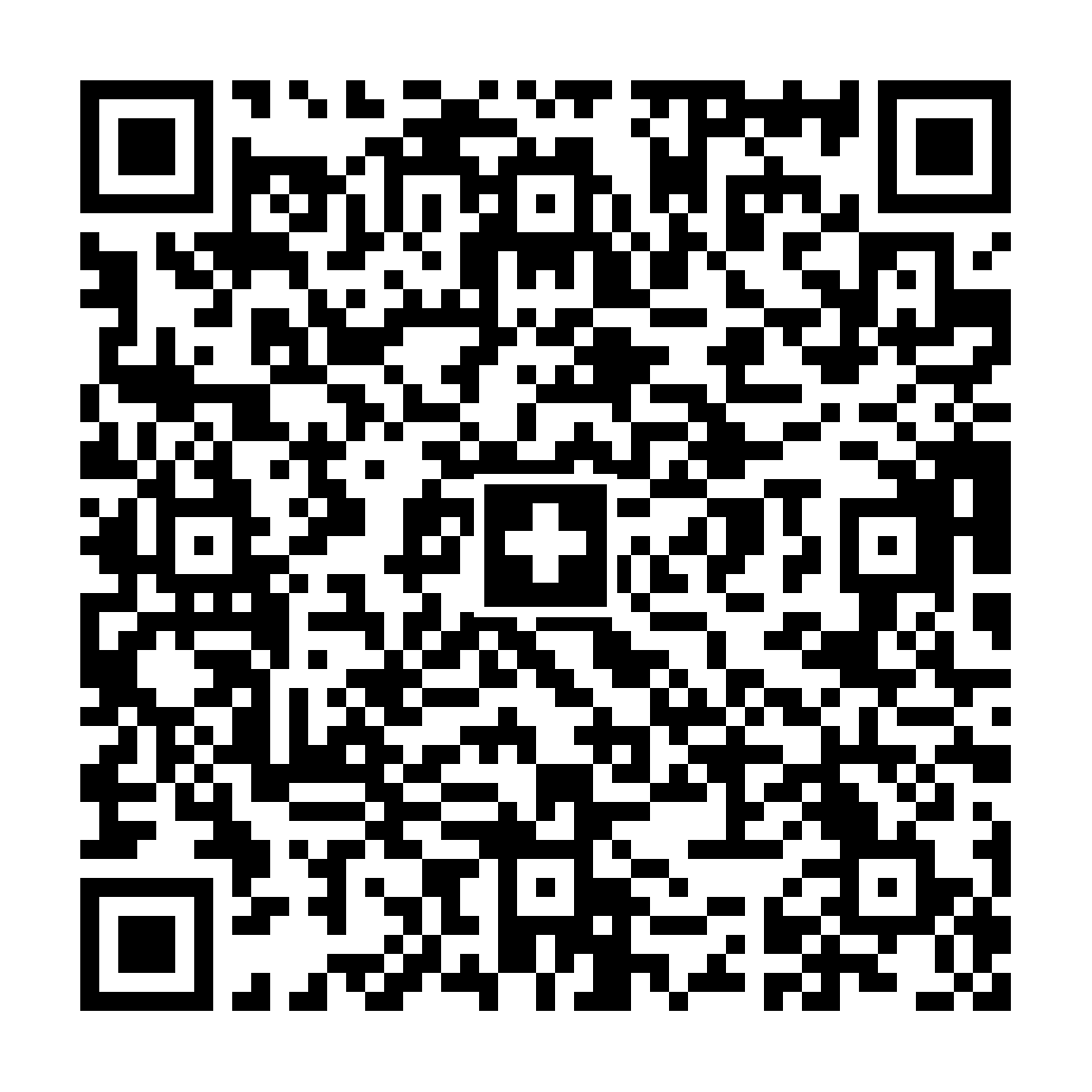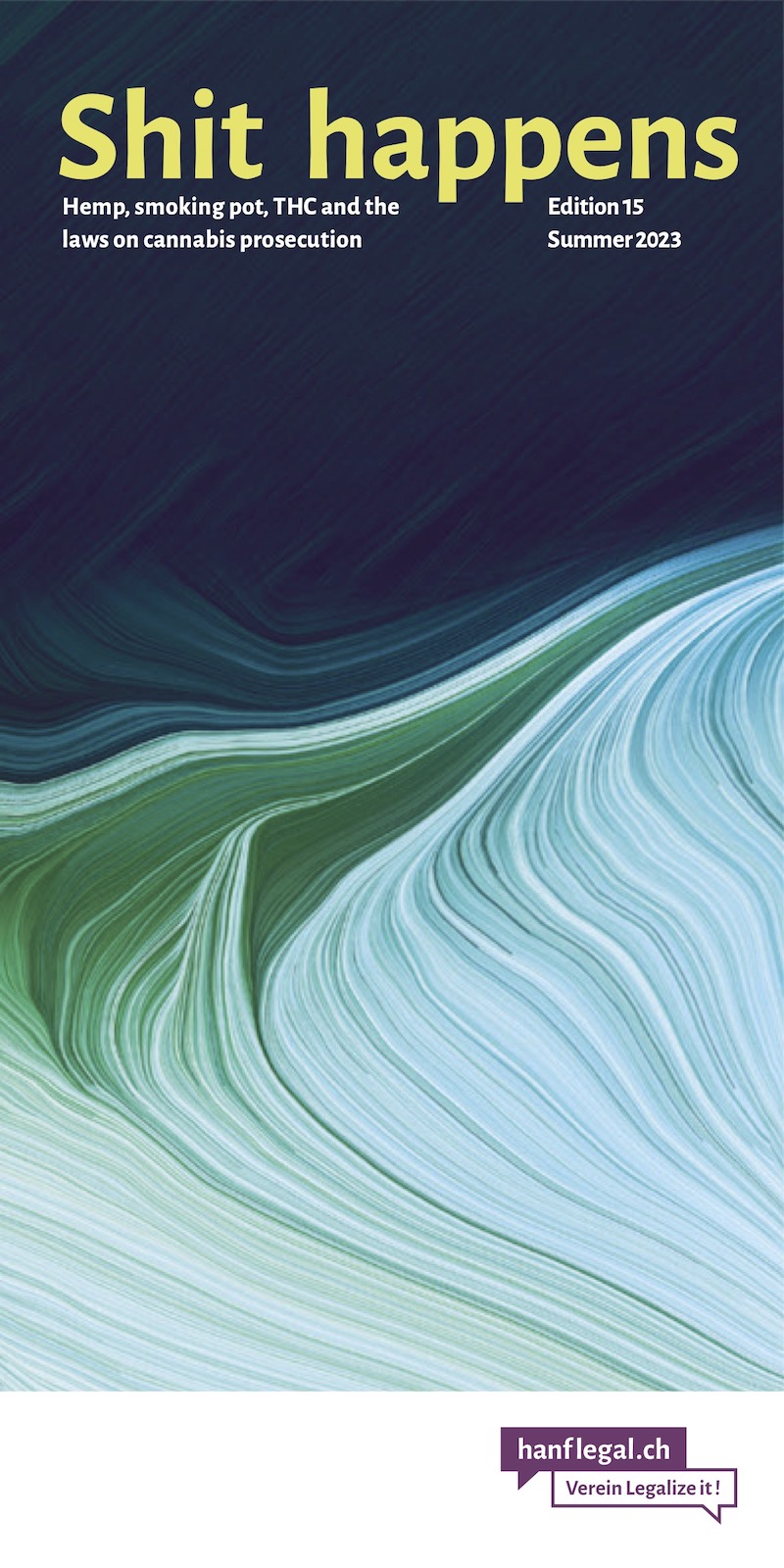- THC & Law:
CBD: Promising and embattled
Cannabidiol (CBD) is on many people's lips: worldwide, search queries for CBD have quadrupled in the last five years, according to Google Trend. At CannaTrade, several suppliers of CBD-containing products were represented, including flowers for smoking. CBD is one of the trending topics in the international cannabis scene. Anyone who visited the Swiss Hemp Fair this year could hardly escape it. For many visitors, the flower samples that were distributed there were the first conscious experience with the cannabinoid. However, there is still uncertainty about the effect and the legal status. However, the scene once again shows itself to be extremely innovative and is developing strongly; with the repressive bodies, however, one must still expect actionist interludes.
Not everything in cannabis gets you high
Cannabidiol is one of the 120 currently identified cannabinoids that occur naturally in hemp. They can dock to special receptors in human cells, the so-called endocannabinoid system, and trigger their effect. Together with THC, CBD is usually the cannabinoid with the highest concentration in the hemp plant and therefore probably one of the better researched. However, compared to THC research, CBD research is still young and has only become established with the advent of “medical cannabis” where the psychoactive effects of THC may be undesirable. Because CBD does not produce a high, it is particularly well suited for medical applications. As with THC, there is no lethal dose for CBD. These properties are responsible for the fact that CBD can also be used in the treatment of children. A few years ago, a case in the U.S. where little Charlotte Figi had her epilepsy controlled convinced many former skeptics and opponents of the effectiveness of CBD.
Not indifferent: THC or CBD
The ratio of cannabinoids in hemp, especially CBD to THC, varies greatly and depends on the variety, growing conditions, processing method and storage of the plants. Today, there are commercially available, bred varieties that have a specifically high CBD content. In variety catalogs, values of 10 to 25 % can be found with simultaneously very low THC contents of less than 0.5 %. There are now also many breeds with partly very high THC and CBD content in a balanced ratio. They often have “autoflowering” properties, which they get by crossing with Cannabis Ruderalis varieties. This means that the plant goes into flowering after a few weeks of growth, rather than when the amount of light is reduced. This third cannabis variety - besides Sativa and Indica - typically has a rather low THC content and a relatively high CBD content; especially its wild forms as well. Since such plants usually reach under 50 cm in height and are only slightly branched, they are well suited for home cultivation on the balcony - CBD enthusiasts should take a closer look at this form of procurement. Varieties with less than 1% THC are legal by law and their cultivation is in principle - at least still - allowed for everyone!
Effect and counter-effect...
In the treatment of epileptic problems, schizophrenia, psychotic disorders, depression and inner turmoil, numerous successes have now been recorded with CBD and there are many substantiated findings. Even in conventional medicine, the view is slowly gaining acceptance that CBD could be an alternative for THC and conventional treatments.
It is also considered promising in the treatment of:
- Cancer
- Diabetes
- Lupus (chronic autoimmune disease)
- Motor disorders
- Nicotine addiction
- Parkinson's
- Chronic and neuropathic pain
- Obsessive Compulsive Disorder
- Osteoporosis
Differences from THC
There are many parallels between CBD and THC, but some of their differences are crucial in determining which of the two is preferred. Cannabinoids target specific cells in the nervous system. In the case of CB1 receptors, they are mainly located in the nervous system, i.e. the brain. Their counterpart, CB2 receptors, are found in the immune system. Incidentally, the fact that cannabis can communicate chemically with the body is nothing unique. Many plants, e.g. poppy, tobacco and coca can do the same. Since CB1 receptors are found where learning, coordination, sleep, and brain development take place, for example, and CB2 receptors are found where disease is fought, it stands to reason that their stimulation has different effects on the body. CBD, interestingly, has little effect on these receptors and is therefore unlikely to be associated with a high. Exactly how CBD interacts with the body is not yet known, but other systems must be involved, including possibly serotonin receptors. They are an element that makes an important contribution to well-being and happiness in the interaction of hormones.
These differences, and probably others that have not yet been researched, are probably responsible for the fact that there are many, sometimes contradictory, claims and experiences among users, supporters and opponents of the two cannabinoids.
Hardly noticeable effect in the brain
CBD not only has little or no psychoactive effect, but actually counteracts the psychoactive effect of THC. This is probably also the reason why breeders have tried for decades to increase the THC level and keep the CBD level as low as possible. The psychoactive effect of cannabis was and still is for the vast majority of users the most important reason for their consumption. weed , which does not yield, could not be sold, but this seems to be slowly changing… CBD, by the way, is not a degradation product of THC, but a cannabinoid in its own right. Possibly the fact that the naturally occurring breakdown of THC in aging hash or weed increases the ratio of CBD to THC has led to this myth. Otherwise, breeders, who had to do a lot of research at the beginning of their search for appropriate strains, could have simply used old weed or hash.
Growing legal CBD cannabis is no different in principle than growing THC varieties, and CBD growers are in an interesting starting position should the market for THC become more open. Most commercially available CBD flower could probably already be easily sold to unsuspecting THC seekers.
Legal developments
This circumstance probably also contributes to the fact that in Switzerland the public consumption of legal CBD cannabis must expect the same repressions: as with normal, illegal hemp. In any case, this summer, after the launch of the “first legal weed in Switzerland”, one could hear in the media that for CBD consumption fixed penalties will be distributed. And this although CBD consumption is not illegal in Switzerland. At least CBD does not fall under the narcotics law. However, anyone who wants to produce or sell it as a remedy or tobacco substitute must comply with numerous requirements. However, CBD flowers can currently still be sold for other unregulated uses. Certain retailers have become cautious, however, and there is a note in the legal notices for scented pads, for example, that CBD has “pharmacological properties.”
Last spring, the FDA, the food and drug agency in the U.S., made a draft regulation that would define CBD as a drug. Thus, it would no longer be allowed to be sold as a food additive, as it has often been done in the past. The same spectacle is currently happening in other countries. In the UK, CBD has fallen under the definition of a medicine since early October - producers and distributors of cannabidiol extracts have been ordered to stop selling and advertising it. At the same time, in Germany CBD has been declared prescription-only, meaning it can only be used as a medicine on prescription. Whether oils and other CBD products that are not offered as medicines are also affected by the regulation is currently unclear, but unfortunately cannot be ruled out.
While this should be good news for pharmaceutical producers, as they will now have a monopoly position for CBD extracts, self-suppliers and small producers, among others, are more likely to suffer from increased regulation.
In the U.S., CBD producers are attempting to achieve certain standards of consumer protection and quality through the industry association CBDRA.org via self-regulation, i.e. self-imposed guidelines instead of government laws. On their website they list the test results of about 70 CBD products, mainly e-liquids and oils. Incidentally, many do not reach the self-imposed quality standards. Whether Switzerland will soon need an association to lobby the CBD industry remains to be seen.
Hemp under 1% THC
Hemp with less than 1% THC does not fall under the Narcotics Act (NarcA), so it is not necessarily illegal. But the NarcA is not the only relevant law:
Food Law
If a hemp product is sold as food, then very low THC limits apply: Here, a maximum of 0.002% THC is allowed (for hemp seedsoil), the lowest value is even 0.00002% THC.
Therapeutic Products Act
Healing effects may only be advertised if the preparation has been approved by the authorities. Even if the preparation appears to be a medicinal product, there may be objections from Swissmedic/BAG.
Narcotics Act
Hemp products are considered prohibited if they contain at least 1% THC. From this value then apply the drastic penalties of NarcA. This is then taken care of by the police and public prosecutor.
Cantonal obligation to register hemp crops
The cantons of Graubünden, Ticino and St. Gallen know a notification obligation for hemp crops, in Baselland the introduction is discussed. The notification must usually be made to the cantonal agricultural office.
Support our work with a donation:
Bank transfer
Account number (IBAN):
CH02 0900 0000 8709 1354 3
Full account details
Or scan this QR code with your eBanking App (ZKB, Revolut, Postfinance, …):

Or open/share the QR code as PDF file with your eBanking App.
Credit card
Donate via credit card
Verein Legalize it!
Quellenstrasse 25
8005 Zürich
Threema ID 7NH65RBY
Don’t miss anything! Follow us on social media:
